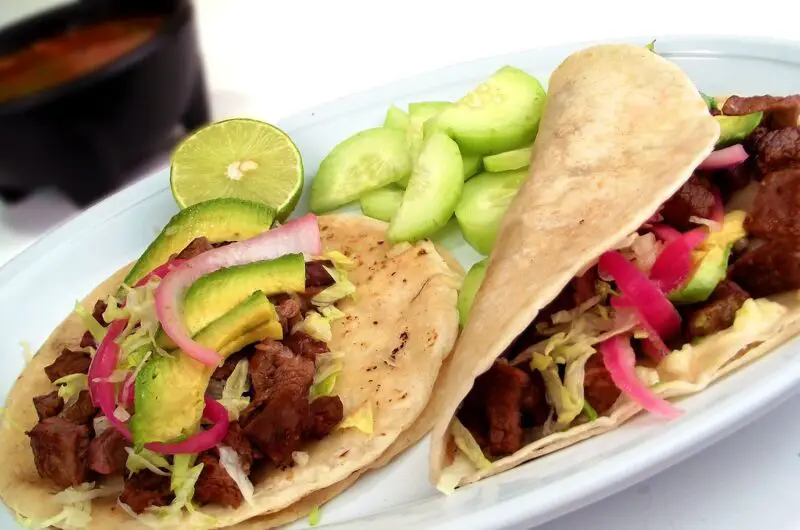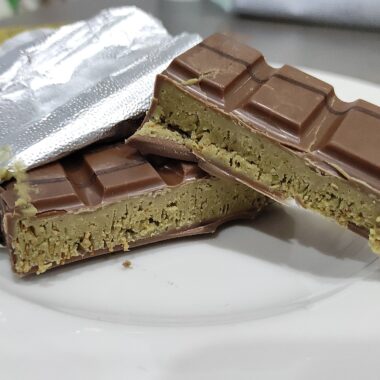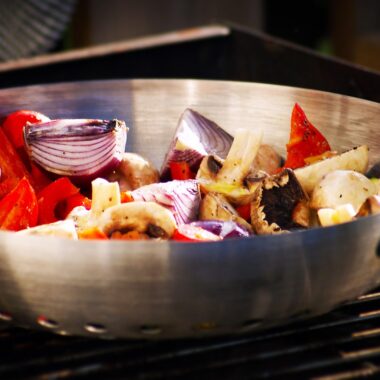Mexican cuisine is one of the most flavorful, vibrant, and diverse food traditions in the world. With influences from indigenous cultures, Spanish colonizers, and even modern global trends, Mexican cooking offers an explosion of taste, texture, and aroma. Whether you’re a beginner or an experienced home cook looking to refine your skills, understanding the essential ingredients, spices, and techniques is crucial.
This guide will take you through the heart of Mexican cuisine, from staple ingredients and iconic spices to fundamental cooking techniques that will help you master authentic Mexican flavors.
Essential Ingredients in Mexican Cooking
1. Corn (Maíz)
Corn is the backbone of Mexican cuisine, dating back to the ancient civilizations of the Aztecs and Mayans. It is used in a variety of ways:
- Tortillas – The foundation of many Mexican dishes, from tacos to enchiladas.
- Masa Harina – A special corn flour used to make tamales, sopes, and pupusas.
- Elote – Whole grilled corn, often slathered with butter, cheese, chili powder, and lime.
- Pozole – A traditional hominy-based soup.
2. Beans (Frijoles)
Beans are a staple protein source in Mexican cuisine and come in many varieties:
- Black Beans (Frijoles Negros) – Often used in soups, tacos, and as a side dish.
- Pinto Beans (Frijoles Pintos) – The main ingredient in refried beans (frijoles refritos).
- Peruano Beans – A creamy, mild-flavored bean used in central and southern Mexican dishes.
3. Chilies (Chiles)
Mexican food wouldn’t be the same without the heat and flavor of chilies. They are used fresh, dried, roasted, and even smoked. Some popular ones include:
- Jalapeño – A mild-to-medium spice level chili often used in salsas.
- Serrano – Spicier than a jalapeño, great for raw salsas and guacamole.
- Poblano – A mild chili, often roasted and stuffed in chiles rellenos.
- Ancho – The dried version of a poblano, with a smoky and sweet flavor.
- Chipotle – Smoked and dried jalapeño, giving dishes a deep, smoky flavor.
- Habanero – Extremely hot, commonly used in Yucatán cuisine.
4. Tomatoes and Tomatillos
Both tomatoes and tomatillos are essential in Mexican salsas and stews:
- Roma Tomatoes – Used in fresh salsa, pico de gallo, and cooked sauces.
- Tomatillos – Green, tart tomatoes that form the base of salsa verde.
5. Cheese (Queso)
Mexican cheeses range from fresh and mild to aged and robust:
- Queso Fresco – A crumbly, mild cheese often sprinkled over tacos.
- Cotija – A salty, hard cheese similar to parmesan.
- Oaxaca Cheese – A stringy, mozzarella-like cheese used in quesadillas.
- Queso Chihuahua – A melty cheese perfect for queso fundido.
6. Meats and Proteins
Mexican cuisine incorporates a variety of proteins, often prepared with bold spices and slow-cooked methods:
- Carnitas – Slow-cooked, shredded pork, commonly served in tacos.
- Barbacoa – Slow-cooked beef or lamb, traditionally cooked in an underground pit.
- Chorizo – A spiced pork sausage that adds depth to many dishes.
- Chicken (Pollo) – Used in everything from enchiladas to soups like caldo de pollo.
Essential Spices and Seasonings in Mexican Cooking
1. Cumin (Comino)
Cumin is widely used in Mexican cuisine to add an earthy, slightly nutty flavor to meats, beans, and sauces.
2. Oregano (Orégano)
Mexican oregano has a stronger, more citrusy flavor compared to Mediterranean oregano and is often used in soups, sauces, and marinades.
3. Cinnamon (Canela)
Mexican cinnamon is milder and slightly sweeter than the common variety. It is used in desserts like churros and traditional drinks like café de olla.
4. Epazote
An aromatic herb often added to black beans to reduce bitterness and aid digestion.
5. Bay Leaves (Hojas de Laurel)
Used in stews and broths to add a subtle depth of flavor.
6. Annatto (Achiote)
This spice gives a deep red color and mild peppery flavor to dishes like cochinita pibil.
Fundamental Mexican Cooking Techniques
1. Making Tortillas from Scratch
Fresh corn tortillas are a game-changer. Here’s how to make them:
Ingredients:
- 2 cups masa harina
- 1 1/2 cups warm water
- A pinch of salt
Steps:
- Mix masa harina and salt, then gradually add water until a dough forms.
- Roll into small balls and press them into thin circles.
- Cook on a hot, dry skillet for about 30 seconds per side.
2. Roasting and Charring Vegetables
Charring tomatoes, tomatillos, onions, and chilies enhances their flavor. Simply place them over an open flame, on a grill, or in a hot pan until blackened.
3. Slow Cooking (Guisado)
Mexican stews (guisados) often involve slow cooking meats with spices, tomatoes, and chilies to create deep, rich flavors.
4. Preparing Salsas
Salsas are the heart of Mexican cuisine. Two popular ones are:
- Salsa Roja – Made with charred tomatoes, chilies, garlic, and cilantro.
- Salsa Verde – Made with tomatillos, serrano chilies, onion, and lime.
5. Marinating with Citrus (Adobo and Mojo)
Citrus-based marinades are common for meats:
- Adobo – A mix of vinegar, garlic, chilies, and spices.
- Mojo de Ajo – A garlic and lime sauce often used for seafood.
6. Frying (Fritura)
Frying is essential for making crispy tacos, tostadas, and churros.
7. Steaming (Vapor)
Steaming is used to make tamales, where masa dough is wrapped in corn husks and steamed until cooked through.
Traditional Mexican Dishes You Must Try
1. Tacos al Pastor
Marinated pork cooked on a vertical spit, served with pineapple, onions, and cilantro.
2. Tamales
Corn dough stuffed with meats, cheeses, or chilies, wrapped in corn husks and steamed.
3. Chiles Rellenos
Poblano peppers stuffed with cheese or meat, battered, and fried.
4. Pozole
A rich hominy soup with pork or chicken, garnished with cabbage, radishes, and lime.
5. Enchiladas
Corn tortillas rolled around a filling, covered in chili sauce, and baked.
6. Mole Poblano
A complex sauce made with chocolate, chilies, nuts, and spices, typically served over chicken.
7. Guacamole
A creamy dip made with mashed avocados, lime, cilantro, onions, and jalapeños.
Final Thoughts
Mexican cooking is an art that balances bold spices, fresh ingredients, and time-honored techniques. By mastering these essential ingredients, spices, and methods, you can create truly authentic and delicious Mexican meals at home. Whether it’s the warmth of a homemade tortilla, the smokiness of roasted chilies, or the complexity of a mole sauce, Mexican cuisine is a celebration of flavor, culture, and tradition.
So, grab your ingredients, fire up the stove, and start cooking your way through the rich and diverse world of Mexican food. ¡Buen provecho! 🌮🇲🇽


















